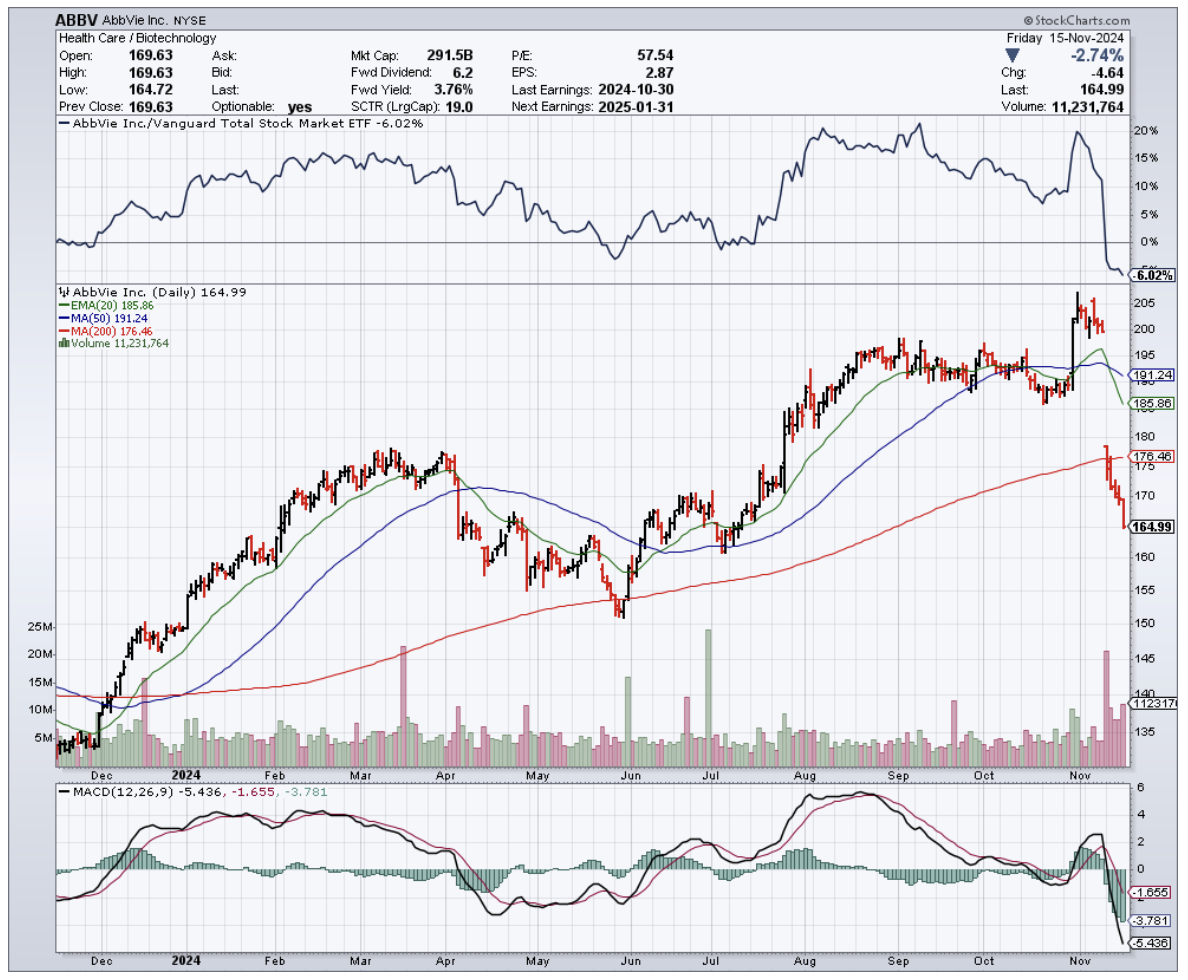If you've ever wondered what $9 billion in disappointment looks like, ask the folks at AbbVie (ABBV). They've just learned the hard way that even the most promising psychiatric drugs can pull a vanishing act worthy of Houdini when it comes to clinical trials.
Their great hope, emraclidine – a name that sounds like it could either cure schizophrenia or clean your bathtub – recently face-planted in not one, but two Phase 2 trials.
Dr. Roopal Thakkar, AbbVie's Chief Scientific Officer, probably wishes this particular day came with a reset button, as the company's experimental once-daily pill performed with all the therapeutic punch of a sugar tablet in treating schizophrenia.
Somewhere, in a parallel universe, there's probably a version of Dr. Thakkar who didn't just watch $40 billion in market value evaporate faster than a teenager's allowance at a gaming convention.
Unfortunately, in our universe, AbbVie's stock took a 12.6% nosedive to $174.43.
But here's where it gets interesting, in that peculiar way that only Wall Street can manage. While AbbVie was having its very bad, no-good day, Bristol Myers Squibb (BMY) was practically dancing in the streets.
Their shares shot up 11% faster than you can say "competitive advantage." Why? Because their own schizophrenia drug, Cobenfy (another name that sounds like it came from the same random pharmaceutical name generator), just got the FDA's blessing.
Talk about impeccable timing.
Let's put this in perspective: We're talking about a global market worth $7.90 billion in 2023, projected to balloon to $11.35 billion by 2030. And it's not just about money.
The World Health Organization tells us there are 24 million people worldwide living with schizophrenia.
In the U.S. alone, it affects between 0.25% and 0.64% of adults, according to the National Institute of Mental Health. That's roughly the population of a small city, all waiting for better treatment options.
Meanwhile, other players in this high-stakes game are making moves that would impress a chess grandmaster.
Take Teva Pharmaceutical Industries (TEVA), busy cooking up a long-acting injectable version of olanzapine.
Or Alkermes plc (ALKS), sitting pretty with their $1.17 billion in revenue for 2022, thanks partly to their own injectable antipsychotic, Aristada.
Then there's H. Lundbeck A/S (HLBBF), the Danish company that spends 18% of its $2.7 billion revenue on R&D, like a scientist with an unlimited coffee budget.
And let's not forget the plucky underdog, Anavex Life Sciences Corp. (AVXL), burning through cash like a marathon runner through calories ($31.6 million in losses for 2022) while chasing their own psychiatric breakthrough.
Their compound, ANAVEX 3-71, sounds like a droid from Star Wars but might just be the next big thing in schizophrenia treatment. Or not.
That's the beauty and terror of biotech investing – you never quite know if you're backing the next breakthrough or the next spectacular failure.
AbbVie, thankfully, isn't exactly heading for the poorhouse. Their blockbuster drug Humira raked in $21 billion in 2022 alone – enough to buy everyone in New Zealand a really nice dinner.
The truth is, navigating the biotech market is less like following a recipe and more like trying to predict where lightning will strike while riding a unicycle.
So here's your biotech shopping list, served with a side of market reality.
AbbVie's spectacular face-plant has created a buying opportunity for the patient investor (that $21 billion Humira cushion makes for a soft landing).
Bristol Myers Squibb is strutting around with their fresh FDA approval like they own the place (and right now, they kind of do).
And if you're feeling particularly adventurous, Anavex Life Sciences offers a lottery ticket that might just pay off.
Whatever you choose, just remember to keep your antacids handy.


